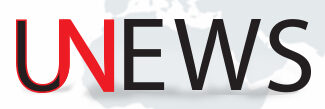Canadian Prime Minister Mark Carney has said he is “disappointed” by an increased tariff on some exports to the United States.
US President Donald Trump escalated a trade war by boosting the tariff rate from 25% to 35%, saying that Canada had “failed to cooperate” in curbing the flow of fentanyl and other drugs across the US border. The Canadian government says it is cracking down on drug gangs.
However most goods from Canada will dodge the import tax imposed by the US thanks to an existing trade treaty, the United States-Mexico-Canada Agreement (USMCA).
Trump also announced sweeping tariffs on dozens of countries, as he continued his drive to remake global trade.
Economists and financial analysts have warned that the new levies will raise prices for businesses and consumers in the US and weigh on the economy, predictions that the Trump administration has dismissed.
White House press secretary Karoline Leavitt told reporters on Thursday that Trump was “proving the so-called economic experts wrong at every turn”.
“What we are watching is President Trump rebuilding the greatest economy in the history of the world,” she said.
Most countries affected by the so-called “reciprocal” tariffs will have seven days before they kick in.
Goods that are loaded onto ships by 7 August and those that are already in transit will also not be affected by the rates if they reach the US before 5 October.
Published by the White House, the orders leave most goods coming into the US facing new import taxes of between 10% and 50%.
Few nations have been spared in the latest list of tariff rates. Even small economies like Vanuatu and Papua New Guinea in the Asia-Pacific region were issued 15% duties.
Countries not mentioned on the list face baseline duties of 10%.
The headline new tariff for Canada seems severe but nearly 90% of Canadian goods imported into the US are exempted under the free trade deal.
That includes fresh produce, energy exports and many industrial goods, according to the Royal Bank of Canada.
However, some imports like dairy products, wood and leather may still face tariffs depending on how talks shape up.
The decision, contained in an executive order, increases the tariff rate from 25% and came into effect at 00:01 US Eastern time (05:01 BST) on Friday.
As the clock ticked towards Trump’s Friday deadline to strike trade deals, he announced goods from Mexico would be charged at current rates for another 90 days, avoiding a similar threatened increase from 25% to 35%.
However senior White House officials said their Canadian counterparts were less constructive in negotiations than Mexico, prompting the higher 35% tariff on Ottawa.
Trump has cited matters other than trade in justification of higher rates on one of the closest US trading partners.
Earlier this week, Carney said Canada would consider recognising a Palestinian state if certain conditions are met, a move that Trump said would make a trade deal “very hard”. And in a statement Thursday the White House said “Canada has failed to cooperate in curbing the ongoing flood of fentanyl and other illicit drugs”.
Carney said Canada accounts for only about 1% of fentanyl imports into the US and is making “historic investments” to crack down on drug gangs including thousands of new police and border patrol agents.
Mary Ng, who until March 2025 was Canada’s international trade minister, told the BBC that tariffs would push Canada to continue to seek out trade opportunities with other countries.
“We have a very integrated supply chain between Canada and the United States, built over decades,” she said. “But Canada has already made a decision… about reducing our reliance and overdependence on the United States.”
“There are markets beyond the United States,” Ng said.
The tariffs hit Asian countries hard.
Two major trading partners in the region – India and Taiwan – were hit with levies of 25% and 20% respectively.
Taiwan’s President Lai Ching-te said the levy was only “temporary”, vowing to complete talks with Washington for a deal. Taiwan had faced an initial charge of 32% when tariff rates were initially announced in April.
And land-locked South East Asian nation Laos is facing the second-highest rate in this round of tariffs. At 40% it sits just behind Syria’s unenviable 41%.
The US has however reached a deal with South Korea, imposing a lower 15% tariff on its imports in return for investment in the US and other concessions.
The escalation of the tariffs had been telegraphed for months, starting when Trump unveiled sweeping “reciprocal” tariffs in April, saying they would rebalance global trade flows and reduce America’s trade deficit – the gap between what it buys and sells abroad.
The measures added to separate levies targeting key sectors such as steel, aluminium and cars.
After turmoil in financial markets, he suspended some of the most punishing measures, inviting countries to negotiate, while leaving in place a 10% duty on most products.
More than 200 countries reached out to the White House in the months following, according to Trump administration officials, though some struggled to get attention.
Trump officials ultimately reached rough “framework” agreements with eight trade partners, including the UK, China, Japan and European Union, which set tariff rates in exchange for promises of investment in the US or other concessions.
But key aspects of those agreements remain unresolved. Talks with other countries such as India ended without terms. Trump says that in addition to a 25% rate, India will an unspecified “penalty” for its dealings with Russia.
Up until nearly the last moment, many countries were still waiting word on what new tariff rates the administration had settled on.
In a post on social media, Swiss President Karin Keller-Sutter said she had a last-minute phone call with Trump, which ended without an accord.
“The trade deficit remains a central concern of his,” she wrote. Switzerland ended up with a 39% tariff.
Source link
 Unews World
Unews World
